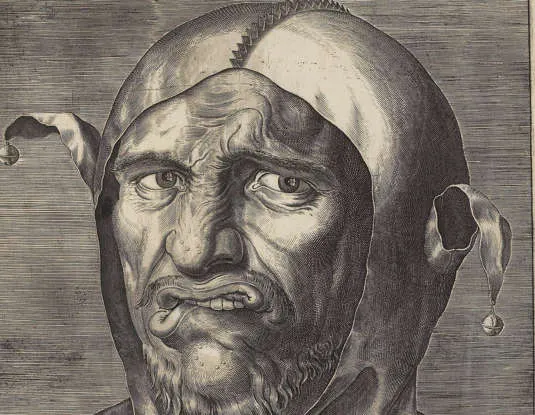Hunting In The Past#2
A delightful greeting!
“Ah, greetings noble Enchanted Potato, thou dost shine so bright!
Pray tell, what magical tales dost thou bring to share with us today?”
Welcome back hunters sorry for the delay the time machine was malfunctioning for quite a while. Anyways let’s being the hunt, as usual today I will mention 2 bounties and your job is to hunt them using the guilds time machine or you can use yours if you are rich enough. So without wasting any time let being with the hunt.
Bounty No. 1
Peter Niers (c. 1540 – 16 September 1581; also spelled Niersch) was a German serial killer and bandit who was executed on 16 September 1581 in Neumarkt in der Oberpfalz, some 40 km from Nuremberg. Based on confessions extracted from him and his accomplices under torture, he was convicted of 544 murders, including 24 fetuses cut out of pregnant women—allegedly, the fetal remains were to be used in magical rituals (he was believed to be a mighty black magician, with many supernatural abilities) and for acts of cannibalism.

Motivations and Early Life
Although not much is known about Peter Niers’ early years, it is thought that he was born in the Holy Roman Empire sometime around 1655. Although Niers’ early years and upbringing are unknown, it is believed that he came from a difficult and impoverished family. Niers’ eventual decline into insanity and violence might have been exacerbated by this lack of security and assistance. Niers asserted that his motivations were retaliation against society, which he believed had wronged him, and a desire for wealth.
The Offenses
Beginning in the late 1670s, Peter Niers’ murderous rampage lasted for more than 20 years. He killed an estimated 544 people during this time, the majority of whom were children, by beating, drowning, and strangling them. Niers preyed on the weak, such as travelers, beggars, and orphans. To win his victims’ trust, he frequently pretended to be a traveling merchant or a beggar. Numerous victims of Niers’ crimes were located in the Bavarian, Austrian, and Swiss regions of the Holy Roman Empire.
Arrest & Trial
Peter Niers was finally arrested in 1701, following a lengthy investigation by authorities. His trial was widely publicized, with many of his victims’ families and relatives present. Niers confessed to his crimes and gave detailed accounts of each murder. He expressed no remorse for his actions, claiming that he was motivated by a desire for revenge against society. Niers was convicted of murder and sentenced to death by breaking the wheel.
Execution & Legacy
Peter Niers was executed on September 16, 1702, in the town of Neumarkt. His execution was a public spectacle, with large crowds gathering to witness the event. Niers’ crimes had a profound impact on the German people, inspiring widespread fear and outrage. His case influenced how serial killers were investigated and prosecuted, putting a greater emphasis on forensic evidence and psychological profiling. Peter Niers left a legacy as a notorious and brutal serial killer whose crimes continue to shock and horrify people today.
Conclusion
Peter Niers was a serial killer who committed crimes that were unprecedented in 17th-century Germany. His motivations, while unclear, were most likely driven by a desire for vengeance against society. Niers’ crimes had a profound impact on the German people, prompting changes in how serial killers were investigated and prosecuted. His legacy reminds us of the horrors that humans are capable of inflicting on one another, as well as the importance of justice and accountability in preventing such atrocities from occurring.
Bounty No. 2
Niels Högel (born 30 December 1976) is a German serial killer and former nurse who was sentenced to life imprisonment, initially for the murders of six patients, and later convicted of a total of eighty-five murders. Estimates of Högel’s alleged victim count have increased since his first conviction; as of 2020, he was believed to have claimed 300 victims in just over five years, making him the most prolific serial killer in the history of peacetime Germany, and possibly the world.he was also known as he angel of death.

Early Life and Career
Niels Högel was born in the German town of Wilhelmshaven in 1976. Although little is known about his childhood, he is said to have come from a stable family. Högel began his nursing career in the late 1990s, working in a variety of hospitals throughout Germany. He was known for being a diligent and competent nurse, with no prior disciplinary actions. Högel’s colleagues described him as friendly and helpful, making his subsequent crimes all the more shocking. It is unclear what motivated Högel to start killing his patients, but it is clear that he was able to hide his true nature behind a mask of normalcy.
The Crimes
Högel’s killing spree began in 2000 and lasted until he was arrested in 2005. During this time, he murdered patients in several hospitals using a variety of methods, including administering lethal doses of medication. Högel targeted vulnerable patients, many of whom were elderly or terminally ill. His motivations are unknown, but it is speculated that he enjoyed the power and control that came with killing people. Högel’s actions were not only morally reprehensible, but also a serious breach of the trust placed in him as a healthcare professional.
Investigation and Arrest
Högel was arrested in 2005 after a colleague reported him for suspicious behavior. An investigation revealed that Högel had tampered with patient records and administered lethal doses of medication. He was initially charged with attempted murder, but later admitted to killing 30 patients. The investigation into Högel’s crimes was extensive, involving several hospitals and hundreds of patients. Högel was eventually brought to justice, which demonstrates the investigators’ dedication and perseverance.
Trials and Convictions
Högel’s trials were highly publicized, with many of his victims’ families attending the proceedings. In 2015, he was convicted of murdering 30 patients and sentenced to life imprisonment. However, further investigations revealed that Högel had murdered many more patients, leading to additional trials and convictions. In 2019, he was convicted of murdering 85 patients, with some estimates suggesting that the true number of victims may be even higher. Högel’s convictions are a reminder that justice can be slow, but it is ultimately served.
Psychological Analysis
Psychologists have tried to figure out Högel’s motivations and behavior. Some speculate that he had a personality disorder, such as antisocial personality disorder, which is defined by a lack of empathy and impulsivity. Others argue that Högel’s actions were motivated by a desire for power and control. It is unclear what motivated Högel to commit such heinous crimes, but it is clear that he is a severely disturbed individual.
Conclusion
Niels Högel’s crimes are a chilling reminder of patients’ trust and vulnerability in healthcare professionals. His case emphasizes the need for greater scrutiny and accountability in the healthcare system. Högel’s actions were not only morally wrong, but they also betrayed the trust and care that patients expect from their caregivers. His convictions serve as a reminder that justice is a slow process, but it is eventually served.
Discover more from Ge-erdy Verse
Subscribe to get the latest posts sent to your email.



